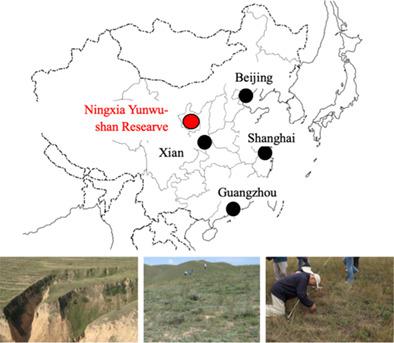当前位置:
X-MOL 学术
›
Ecol. Res.
›
论文详情
Our official English website, www.x-mol.net, welcomes your feedback! (Note: you will need to create a separate account there.)
Livestock‐exclusion duration required for restoring grassland in semiarid, loess region in China: Estimate based on species composition measured from small‐scale vegetation patterns
Ecological Research ( IF 2 ) Pub Date : 2021-01-13 , DOI: 10.1111/1440-1703.12195 Yasuo Yamamura 1 , Jimin Cheng 2 , Taisuke Yasuda 3 , Jun Chen 4 , Tianming Hu 4 , Yoshimichi Hori 1 , Takashi Nakano 3 , Masae Shiyomi 1
Ecological Research ( IF 2 ) Pub Date : 2021-01-13 , DOI: 10.1111/1440-1703.12195 Yasuo Yamamura 1 , Jimin Cheng 2 , Taisuke Yasuda 3 , Jun Chen 4 , Tianming Hu 4 , Yoshimichi Hori 1 , Takashi Nakano 3 , Masae Shiyomi 1
Affiliation

|
To restore the degraded grassland in the Yunwushan Natural Reserve of Ningxia semiarid loess region, Ningxia Autonomous Region, China, managers have established grasslands with excluding livestock from one large area every 5 years since 1982. The annual precipitation at the site is around 400 mm, and heavy grazing by sheep/goats has been conducted in the past. In July 2009 in which vegetation surveys were conducted, seven grasslands with different exclusion durations such as 0, 2, 7, 12, 17, 22 or 27 years had already been established. The objectives of survey were to clarify the vegetation changes with exclusion duration, and to estimate the number of years required for recovering the vegetation. In each of these grasslands, 100 50 × 50 cm2 quadrats, each of which was further divided into four 25 × 25 cm2 sub‐quadrats, were set, and then each of the species occurring within each sub‐quadrat was recorded. Aboveground biomass and soil hardness within each quadrat were also measured as auxiliary variables. We used eco‐statistical survey and analysis methods of small‐scale spatial patterns of vegetation. The followings are results obtained: after 12–17 years of exclusion, (a) the soil had softened; (b) the aboveground biomass had increased to amounts >200 dw g m–2; (c) the spatial uniformity in biomass increased to a stationary state; and (d) the dissimilarity of species composition between two successive exclusion durations decreased to a stationary state. We conclude from these observations that the degraded grassland required 12–17 years of exclusion to restore vegetation and productivity. We also proposed candidates of plant species to be seeded or planted for recovering degraded grassland in this area.
更新日期:2021-01-13



























 京公网安备 11010802027423号
京公网安备 11010802027423号